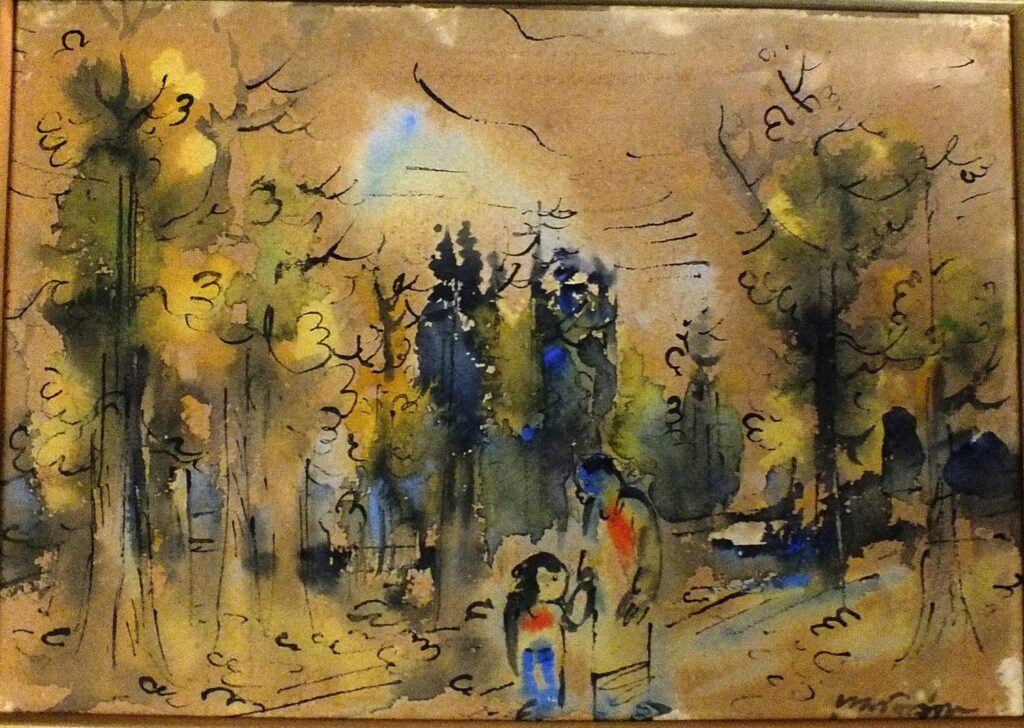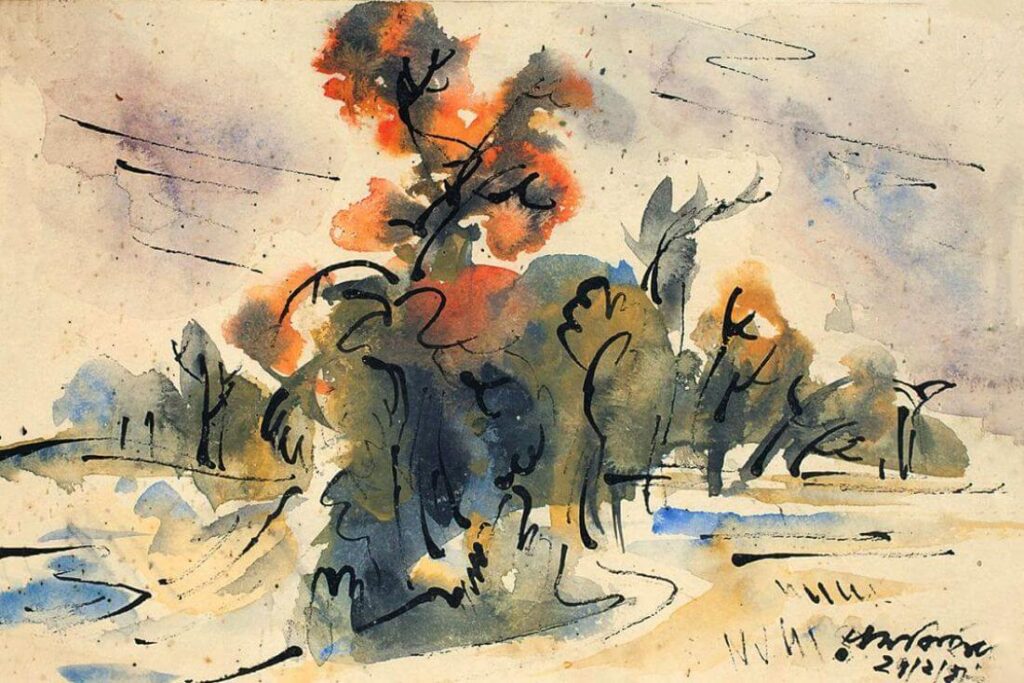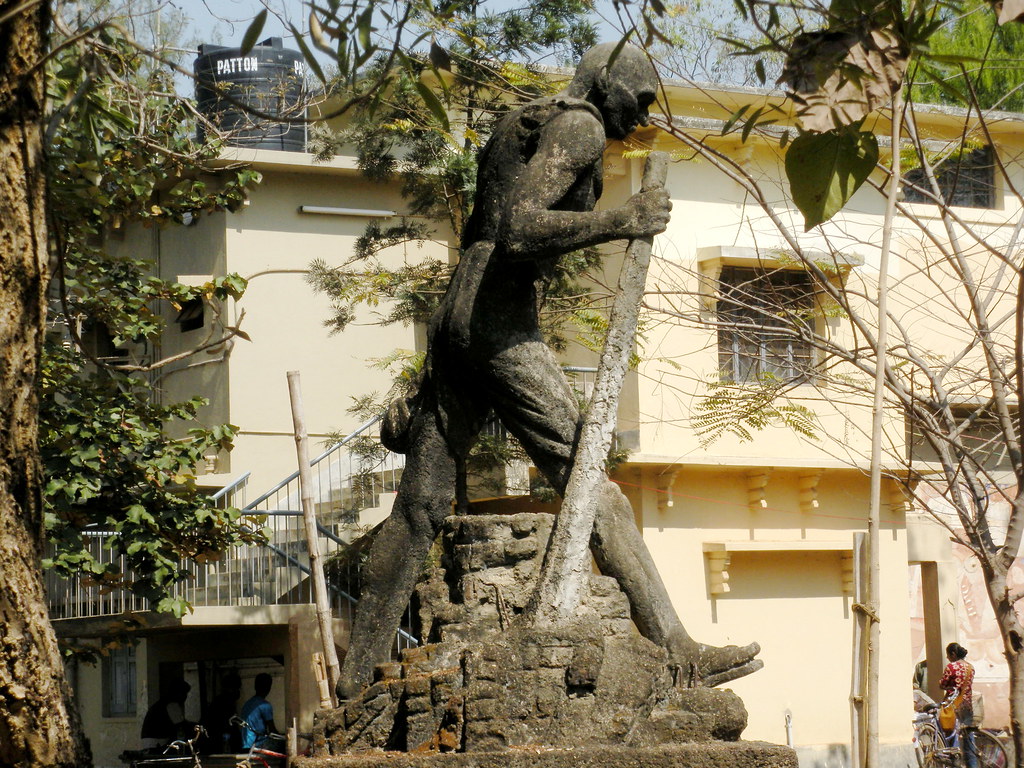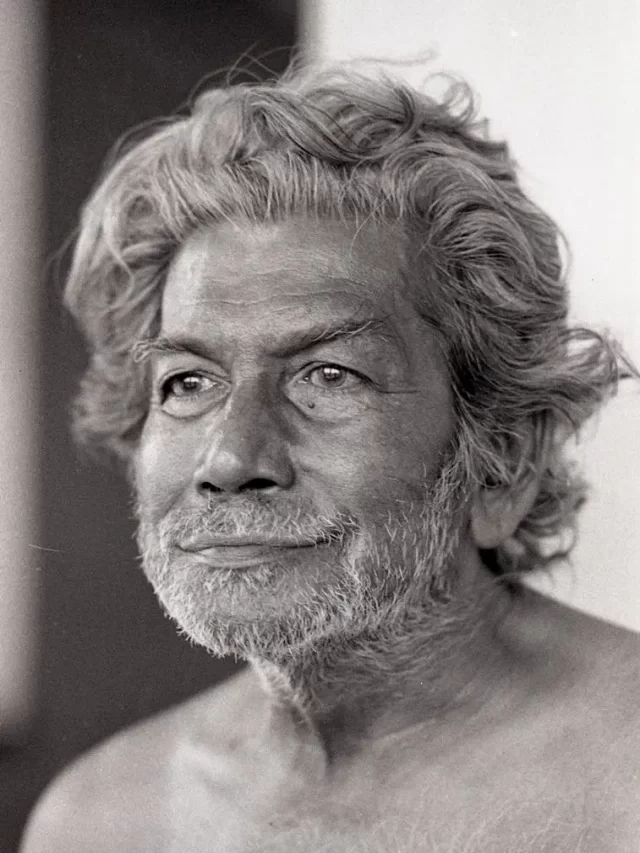What I see with my eyes in this world’s garden in the light of day, I represent in my painting; what I touch and feel in its darkness, I embody in my sculpture
Ramkinkar Baij
From sculptures to paintings, nothing was left untouched when it came to the versatile experimentalist, Ramkinker Baij. Born on May 25th, 1906, the pioneer of modern sculptures in India, Baij is credited to be one of the most significant figures in the Indian Modern Art movement. He was born in the Bankura district of Bengal in an economically deprived barber’s family. Baij studied in Shantiniketan after a recommendation from Ramananda Chattopadhyay.
Ramkinkar Baij Early Life
Ramkinkar Baij used to imitate the local idol maker Ananta Sutradhar at a very young age and the age of 16, his talent caught the eye of eminent journalist Ramananda Chattopadhyay who referred him to Kala Bhavan. He was admitted to Kala Bhavan in 1925 under the guidance of Nandalal Bose. He along with Bose and Benode Behari Mukherjee played a vital role in making Santiniketan the most important centre of modern art in pre-Independent India.

After completing his studies, he became a faculty member at Kala Bhavan and started filling the campus with sculptures which were innovative in subject matter and personal in style. Despite his exposure to the contemporary European art world in Santiniketan, he never imposed colonial ideals of art on his art form. Rather than following all the pre-established rules that governed art, he focused on intuition as his main driving force.

For his irrefutable contribution to Indian art, the government of India honoured him with the Padma Bhushan in 1970. Ramkinkar Baij was a fellow of the Lalit Kala Academy in 1976 and was also conferred the honorary doctoral degree of ‘Desikottama’ by Visva Bharati in the same year. He died on 2 August 1980.
Ramkinkar Baij Artist Style
Ramkinkar Baij artworks have a range of influences from Nandalal Bose, Tagore and even Cezanne. Ramkinkar Baij sculptures were essentially experiments which opened new pathways for the upcoming artists in India. He introduced new ways for sculpting via cement concrete casting instead of the more famously followed expensive plaster. Moreover, in Ramkinkar Baij paintings, the experiments resulted in the usage of linseed oil in his oil paintings and the usage of shoe brushes on silk.

Defining himself as a non-conformist, Baij never followed the rules of Realism or Modernism. However, Ramkinkar Baij works existed at a time when traditional Indian art was transitioning into Modern art, making his artworks notable in the studies of the Indian Modern art movement. Early Ramkinkar Baij paintings followed the Impressionist style. At the time, he was inspired by Paul Cezanne and Pablo Picasso. Moreover, he was awe-struck by Cubism which was heavily reflected in Ramkinkar Baij drawings. It is to be noted that despite being inspired by several great artists, his resultant artworks show his unique take on the art style along with his stark individualism.

Ramkinkar Baij Works
Some of the famous Ramkinker Baij sculptures include the ‘Call of the Mill,’ ‘Thresher,’ ‘Famine,’ ‘Sujata’ and many more. All Ramkinkar Baij sculptures are great contributions to the heritage of Indian sculpture. ‘Lamp Stand’ in 1940 is an example of a new wave of modernism fused with the abstract in his sculptures. The figure of ‘Yakshi’ placed at the entrance of the Reserve Bank of India was made by him from Shivalik Sandstone which depicts the idea of prosperity through agriculture.

It was derived from ‘Bisnagar Yakshini’ from the Calcutta Museum. The cement bust of Rabindranath Tagore in Balatonfured, Hungary by Ramkinkar Baij was a controversial subject as “it did not resemble Tagore.” Later the same was replicated by the Indian government and given to Colombia, Finland, and Israel. Ramkinkar Baij Gandhi sculpture was yet another which saw itself amid controversy. According to some politicians, the hands and feet were disproportionate. However, Baij discredited the accusation, as it was Gandhi’s “image in his mind and not the public’s mind.”

Santhal Family Sculpture by Ramkinkar Baij
The Santhal Family sculpture by Ramkinkar Baij in particular, showcased his true ideologies, as the larger-than-life sculpture displays a family of the Santhal tribe. At the time, huge sculptures and figures were limited to Gods and rulers; however, Baij portrayed the Santhal tribe in such a display of glory and splendour- a sculpture that sits in Shantiniketan. Ramkinkar Baij works were a protest, it was political and included anti-war ideals with a strong sense of nationalism.

Sujata by Ramkinkar Baij
Sujata by Ramkinkar Baij is an ode to nature and its powers. The lack of a pedestal brings the sculpture and nature together. The surrounding trees are symmetrical to the sculpture as well. ‘Sujata’’s towering height makes it blend in with the tall eucalyptus trees in the background. It gives the impression that a tree-nymph is strolling around Santiniketan’s grounds. ‘Sujata’ was modelled after Jaya Appasamy, an artist and fellow student.

Image Courtesy – The Indian Express
10 Reasons Why You Shouldn’t Overlook Somnath Hore; The Master of Modern Art

Vaishnavi Srivastava is a learning writer, a keen researcher and a literature enthusiast. She is a Sub-editor at Abir Pothi.






